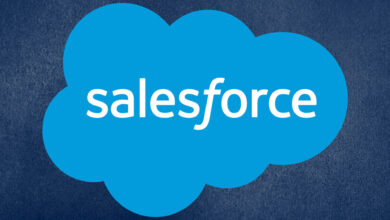Secrets of Organic Marketing in 2025: Why Paying for Ads Isn’t the Only Answer

When we hear the word “organic,” we usually think natural, pure, and unaltered. A delicious juice, perhaps. Well, the same goes for organic marketing — minus the juice part.

Organic marketing is all about naturally attracting your audience to your brand or business. It’s about grabbing their attention and winning them over without “paying” for it. But how do you do that — especially in a saturated market like 2025?
To be honest, while I recognize times are tough, I’m still an old-school “inbound marketing” purist at heart. The success you get from organic outlets just hits differently, and everyone can taste it with the right approach.
Let’s go over what organic marketing is, how it compares to paid alternatives, and how to create your strategy.
Table of Contents
What is organic marketing?
Organic marketing is any marketing tactic that builds awareness of your business through its own merit rather than paid promotion. In other words, it’s marketing that your audience finds naturally. This can include blog posts, case studies, guest posts, videos, emails, social media, PR, and other types of content.
The main goal of organic marketing is to increase brand awareness and build a natural connection with your audience through educational or entertaining content.
When I think about it, it’s really the idea of “inbound marketing” I first learned from HubSpot back in 2013 as a wee marketer.
It said that people no longer respond when you “push” your message on them through traditional outbound methods like billboards and commercials. These methods interrupt people when they’re going about their day, often when they aren’t even in the market.
Organic marketing, however, “pulls” people in. It makes your business present and easy to find when they’re actively looking for solutions. It attracts buyers who actually need your offering, even if they don’t convert immediately.
Benefits and Drawbacks of Organic Marketing
What are the benefits of organic marketing? Well, overall, it creates a better, less intrusive customer experience, establishes trust with your target audience by sharing real value, and uses low-cost mediums and tactics.
Sounds nice, doesn’t it?
The only real drawback is that it can take an extended period of time to see results. Blog articles and website pages take time to get crawled and indexed by search engines. It takes time to build a following on social media. It takes time to build an email list.
Paid marketing bypasses all that — but more on that shortly.
Organic Marketing Channels
Before we dive into the specific differences between organic and paid marketing, let’s discuss the most common types of organic marketing channels.
Truthfully, most mediums or channels can be organic if you just let them do their thing (without paid backing), but these are the ones we typically see:
Organic Social Media Marketing
Blogging
Guest Blogging
SEO (Organic Search Engine Marketing)
User-generated Content
Email Newsletters
Public Relations/Media Relations
YouTube Videos
Podcasts
Organic Social Media Marketing
Recently, I saw a meme that said something like, “Picture it: It’s 2011. You just took a bad photo of your cup of coffee. You put a sepia filter on it and posted it to your 12 followers. It got zero likes. Life is good.”
This, my friends, was the golden age of organic social media.
You posted content to your profile or account that could only be seen by your followers in the feed or, if you were lucky, discovered through a share, hashtag, or link.
There were no paid ads or sponsored posts, so when you did get a ton of engagement or traffic, you knew you earned it.
Some of the perks of organic social media? It’s free to get started, and depending on the platform, it could be a video, image, blog article, or even a product review.
Read: Social Media Marketing: The Ultimate Guide
Blogging
This one’s pretty self-explanatory, so I’ll be quick.
Blog posts are long-form written articles published on your blog or website to share knowledge, news, or your company’s unique perspective with your audience.
They can showcase your credibility and expertise to build trust with potential buyers and convince them you’ll deliver on your promises.
Blog articles are usually search-engine optimized to help your website get found, and, minus the cost of a content writer, starting a blog is fairly low-cost.
Need help setting up your blog? Check out our free blog maker.
Guest Blogging
Guest blogging is when you write blog articles for publications other than your own. I did this a lot for past employers. In fact, HubSpot was one of my most frequent destinations.
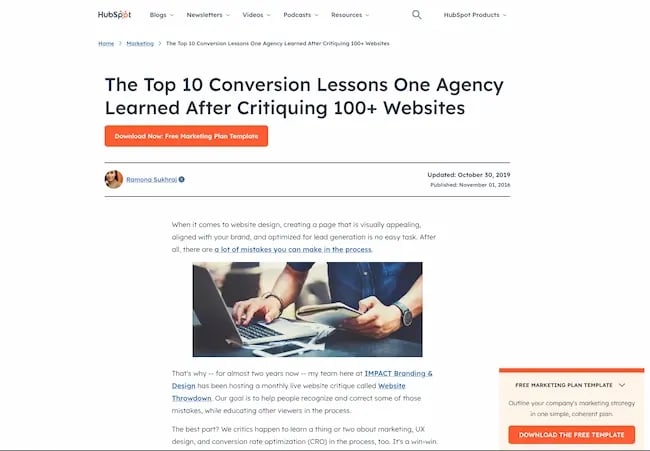
The goal is to get exposure to a new, relevant audience and introduce your brand to them. Typically, this means contributing to a publication with larger readership or more engagement.
Search Engine Optimization (SEO)
SEO, or organic search engine marketing, is when you optimize content on your website or other online presence to be found by your target audience through search engines.
While social media channels tend to get the most attention, the best place to spend your time with organic marketing is SEO, as it tends to drive 1000%+ more traffic.
Unsure about your SEO strength? AI Search Grader and Website Grader can help evaluate how your strategy stacks up and where you need to improve.
Read: How to Create an SEO Strategy for 2025 [Template Included]
User-generated Content (UGC)
UGC is content your buyers create about your brand, product, or services. They haven’t been paid to post or talk about you, but perhaps they have been encouraged to tag your brand or use a particular hashtag.
This content is great because it showcases what real customers experience and feel after buying from you. It’s social proof of everything you claim.
Read: How to Leverage User-Generated Content in Your Marketing Strategy
Email/Newsletters
Newsletters are long-form emails you send to a list of contacts who have opted to receive them. Because these aren’t publicly posted online, these are a great place to be more candid and exclusive with the information you share.
In fact, email marketing, in general, is.
Also, unlike many other channels we’re discussing here, email doesn’t have a paid option, though some ads are designed to look like email, such as Gmail Sponsored Promotions.
Read: How to Create an Email Newsletter [+ Expert Tips & Checklist]
Public Relations/Media Relations
With Public Relations (PR), we’re discussing media coverage you didn’t pay or ask for. Think product reviews, interviews, or features about your team, brand, or offer.
YouTube Videos
YouTube is unique because its videos are included in the search results of its parent company Google. Many also consider it the world’s “second largest search engine.”
If you want to give a video the highest potential to reach a large, new audience, YouTube is the platform to host it.
Read: How to Start a YouTube Channel [Expert Tips + 30 YouTube Channel Ideas]
Podcasts
Video or purely audio, podcasts are a create way to build trust and relationships with your audience.
Blend’s Marketing Manager, Dan Stillgoe explained saying, “It‘s true that you can’t directly attribute leads or revenue from a podcast, but that’s not its purpose.”
“Podcasts are the perfect way to improve affinity and connection for your brand and craft engaging and authentic content — something buyers are beginning to crave in this AI era.
“When you realize these long-term and surrounding benefits, podcasting becomes a clear and obvious investment.”
Read: Podcasting in 2025: What You Need + 9 Steps To Get Started
Let’s take a look at some examples of organic marketing in action.
Organic Marketing Examples
1. Chili’s Grill & Bar: Organic Social Media Marketing
One brand that is doing particularly well with its organic social media marketing lately is Chili’s Grill & Bar.
The American restaurant chain credits its “cheeky” humor on social media for helping it connect with Gen Z audiences and boosted business.
According to Insider, “The parent company of Chili‘s, Brinker International, reported a 7.4% increase in same-store sales at Chili’s in 2024; sales jumped 14% on the same basis in the first quarter of fiscal 2025.”
2. Canva: Blog
You know who has terrific organic blog content? (Besides HubSpot, of course.) Canva.
The design software company shares comprehensive, relevant content on its blog, which educates its audience on graphic design in general and how to use its tools.
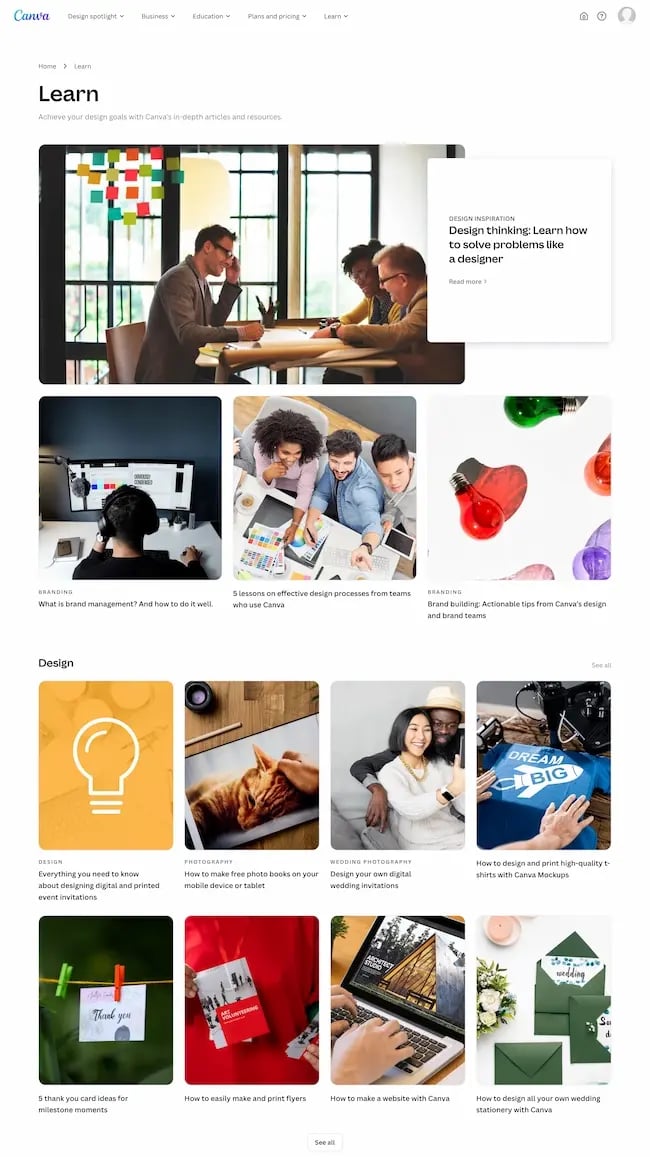
This content speaks to their audience’s interests and concerns, offering them the value they crave at no cost and also positioning them as experts in their space.
This is all while creating pages to get found in search engines and shared/linked too.
3. Eternal Works: Guest Blogging
Admittedly, guest blogging isn’t a channel we hear much about in 2025, but that doesn’t mean the benefits aren’t alive and well.
HubSpot has worked with several external contributors over the years, including Tim Jones.
Jones is a Founding Member of growth agency Eternal Works and shares insights from his personal sales experience through articles like this one on our blog.
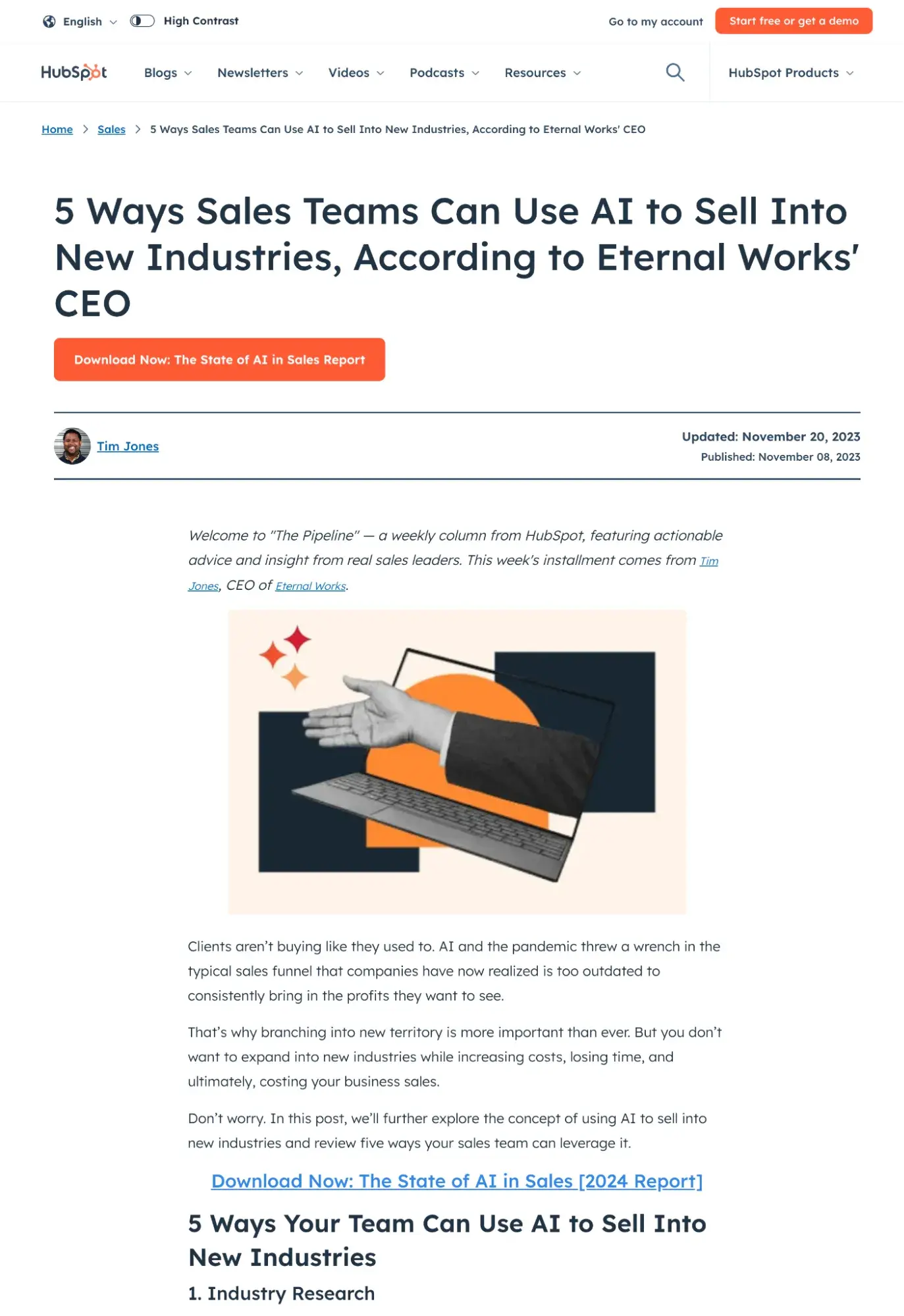
We get high-quality, expert content and Jones gets to reach a large, new global audience. It’s a win-win.
4. Glossier: UGC
A lot of brands invest in user-generated content these days. In fact, the 2025 State of Marketing found that it’s one of the top three channels marketers plan to increase their investment in this year. Glossier is one brand that has always done UGC particularly well.
The beauty brand encourages UGC by offering chances to be featured and creating fun, interactive experiences in its retail spaces.
This is also a great example of organic social media marketing.
5. Airbnb: Email
While still promotional, Airbnb’s emails go for the “soft sale.” In this example, they use a scientific fact about the effects of being around water on humans to highlight its offerings with crisp images and compelling calls-to-action like “play it cool.”
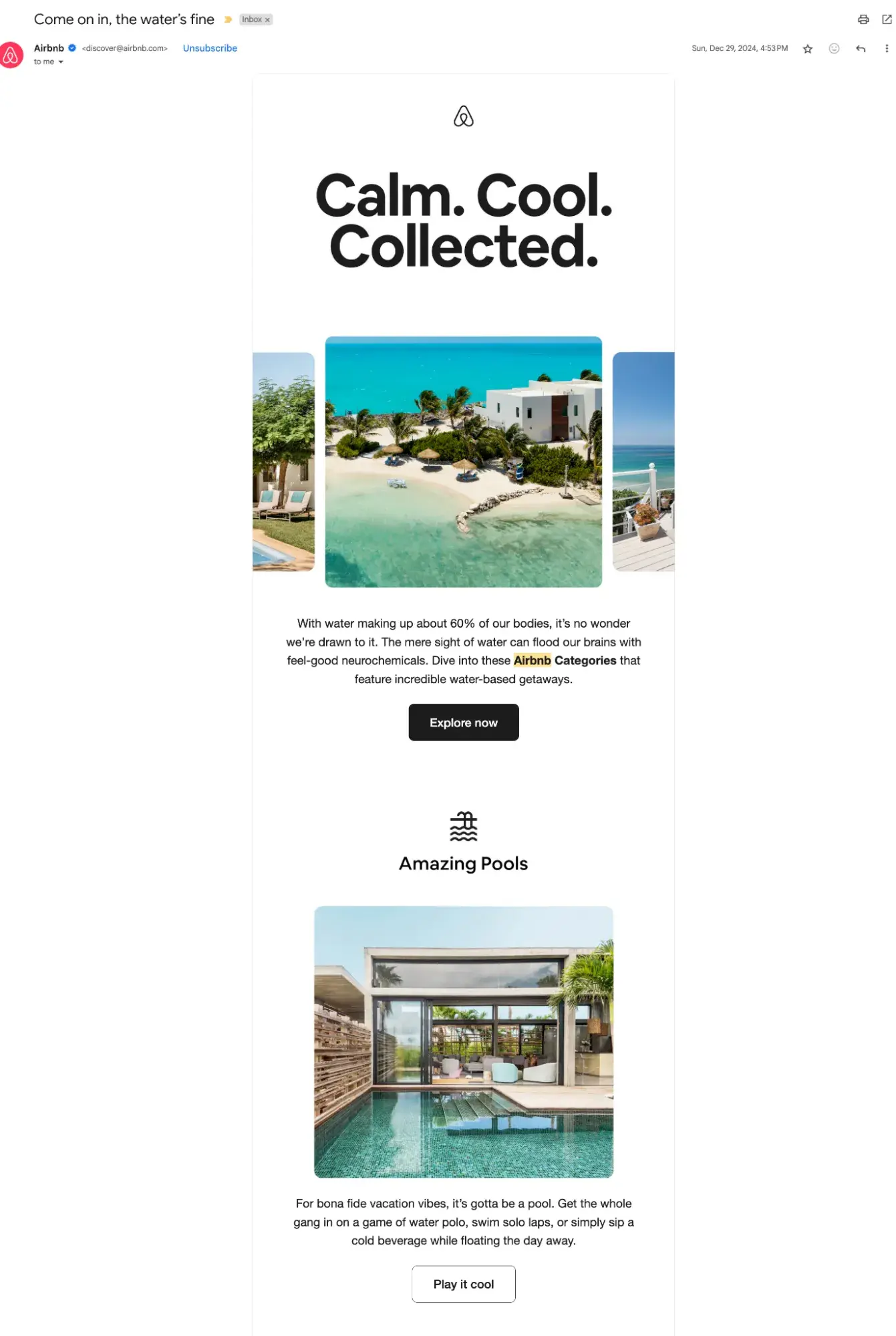
6. HubSpot Marketing: YouTube
Our HubSpot Marketing YouTube Channel is all about sharing actionable marketing and business knowledge, but it’s not solely promotional.
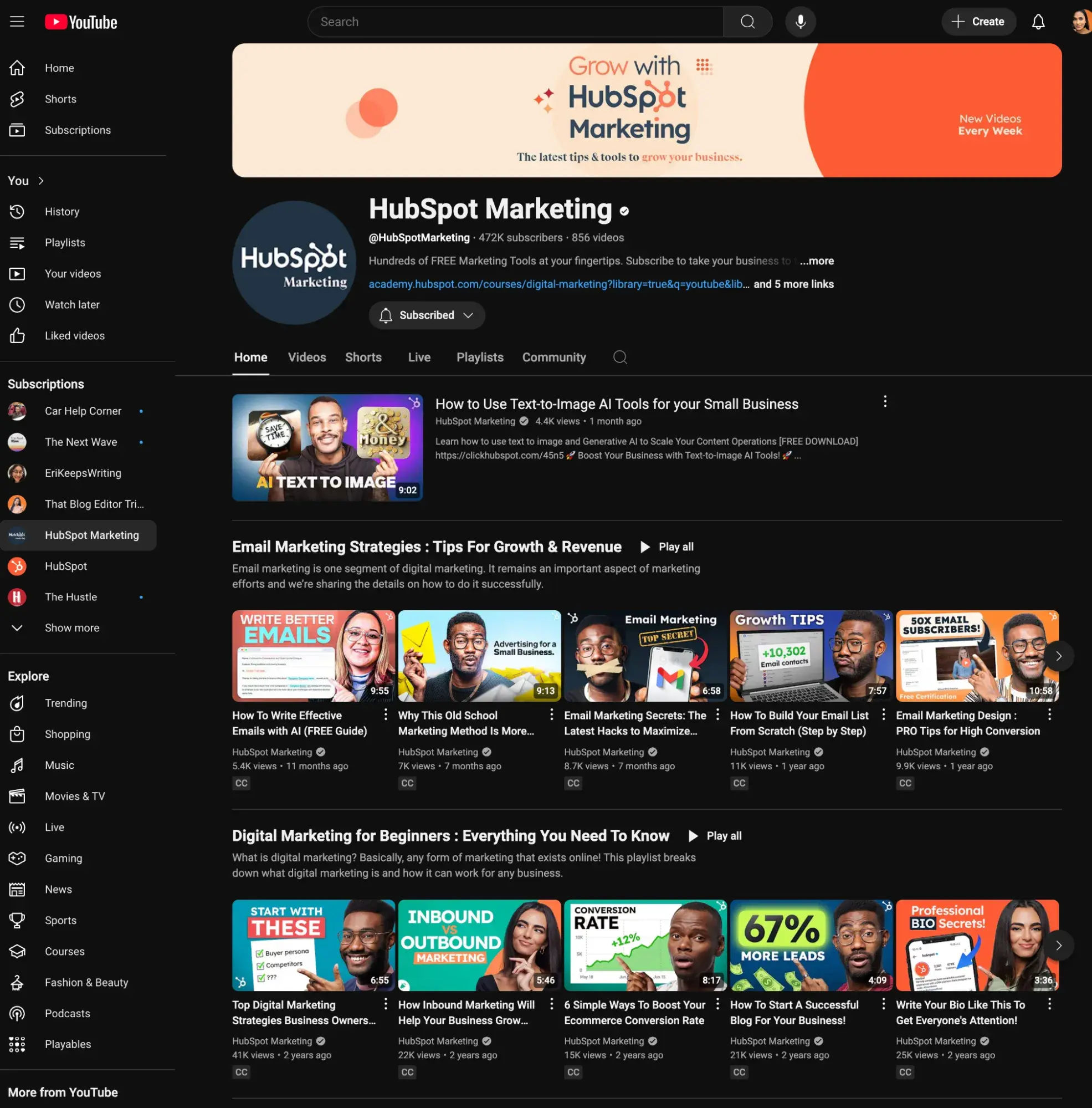
As a discovery channel, YouTube allows us to build awareness by sharing content that speaks to common business pain points, and our audience gets value whether they’re a HubSpot user or not.
Organic Marketing vs. Paid Marketing
While organic marketing is focused on generating traffic to your site over time, paid marketing, or inorganic marketing, uses paid methods to target, reach, engage, and convert audiences quickly.
Paid and inorganic marketing strategies include:
Paid Search Ads (i.e. Keyword Ads)
Paid Social Media Ads (i.e. Sponsored Posts, Boosted Posts)
Sponsored Articles
Display Ads
Video Ads on YouTube, etc.
Paid Media Mentions
Shoppable Ads on Social Media
In a nutshell, it’s traditional advertising with a digital, data-driven twist. You can micro-target your ideal audience and reach people who you may have never gotten in front of otherwise. (Facebook Ads, for example, are renowned for this.)
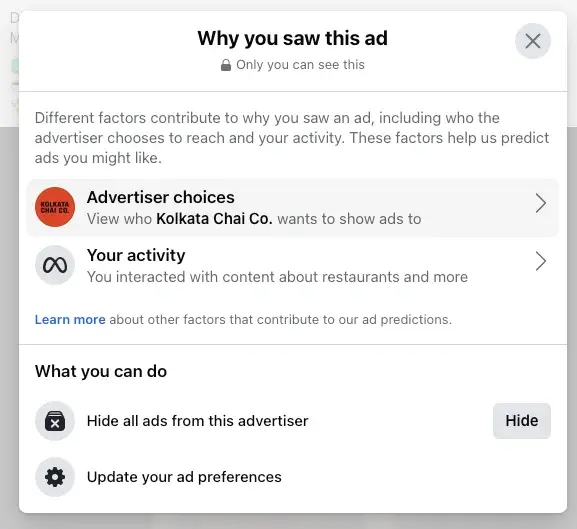
Plus, you can guarantee prominent placement over competitors on the platforms your target audience is already using, like Google or TikTok.
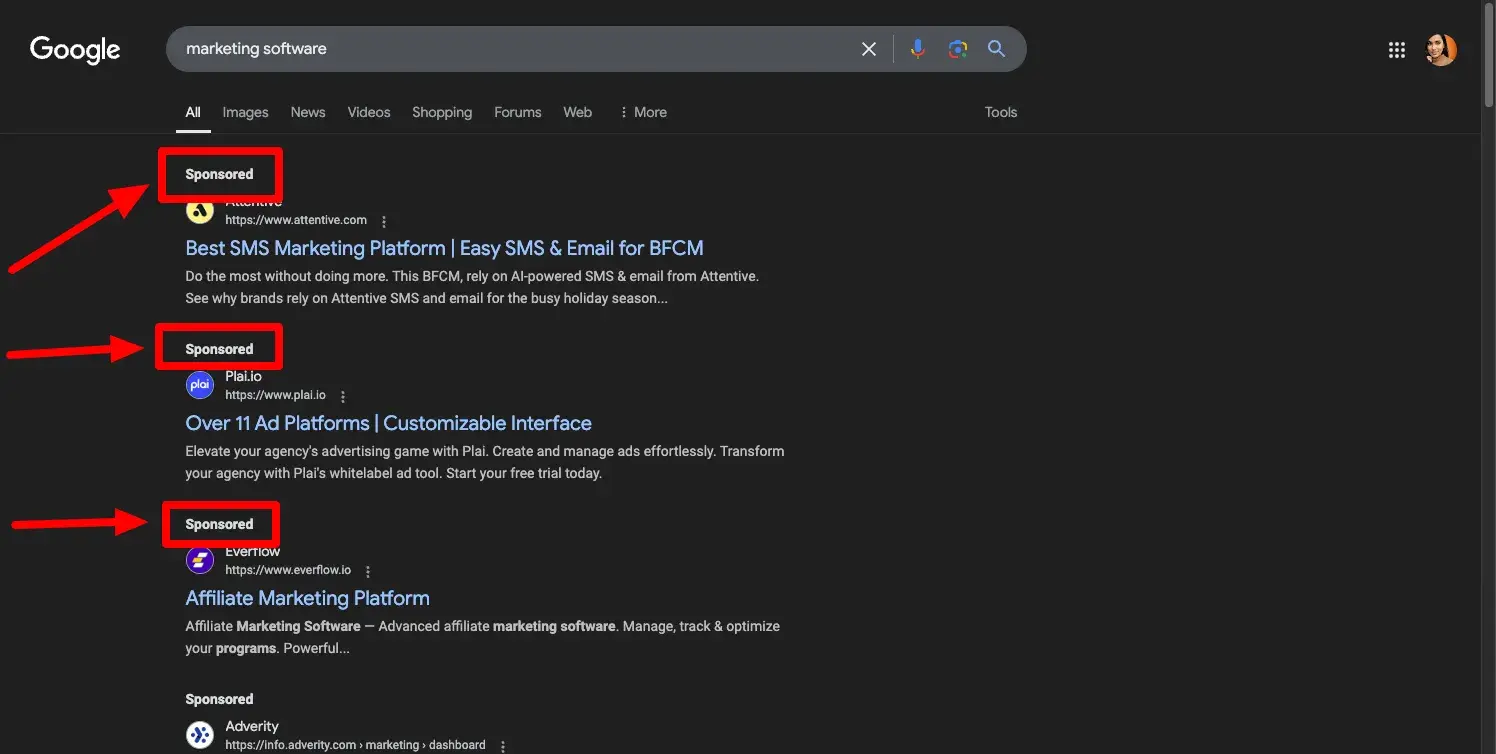
While organic marketing may be measured in general return on investment (ROI), paid marketing is usually measured in return on ad spend (ROAS). On the other hand, both may track and set goals for impressions, conversion rates, and traffic, among other things.
At the end of the day, all marketing is about attracting an audience and ultimately closing sales. The key differences between organic marketing and paid marketing come down to cost and speed toward the goal.
Additionally, organic marketing and paid marketing can and often should work together. For instance, if someone comes across your website organically, you can retarget them later with paid ads (on social media, search engines, etc.).
So, wait — does organic marketing still work in 2025?
Here’s the thing: Organic marketing still exists. I use it almost daily for myself and my side hustles, and you can get results from it. But the environment has changed — and results aren’t easy.
The internet is a global marketplace, meaning someone could be your competitor online even if geographically, they could never actually steal your customers. Kind of wild, right?
With that much competition for attention plus every platform’s move to monetize, organic results (like traffic, engagement, follower growth) have become harder to come by. Algorithms and noise bury great content and brands. The best solutions often get missed.
Paid marketing aims to overcome that. It promises to get you past all the noise and in front of your customers, but, of course, it comes at a cost. Not every business can afford to pay to play this way.
Personally, I think both paid and organic marketing are needed.
Organic marketing should be the foundation and vast focus of your effort, while paid should be used strategically to enhance it. Sometimes, paid can help you establish that foundation, or as I mentioned earlier, organic can help you inform your paid strategy.
Whatever approach you choose, you’ll need a strategy to get you started.
Organic Marketing Strategy
Identify your mediums.
Create your content calendar/backlog.
Create content.
Optimize your content.
Post
Evaluate and improve.
Now that you know the ins and outs of organic marketing, how do you create a strategy?
1. Identify your mediums.
To build an organic marketing strategy, you first need to know what kind of content you want to invest in. The most effective way to figure this out is by analyzing your ideal buyer persona as well as your current traffic sources.
Organic marketing only works when you truly understand your audience and what they want to see.
So, ask yourself where you currently get the most organic traffic. Is it from your YouTube channel, blog posts, or email newsletters? Then, think about how your ideal audience usually discovers a business like yours. (Hint: It’s social media for the majority of consumers these days.)
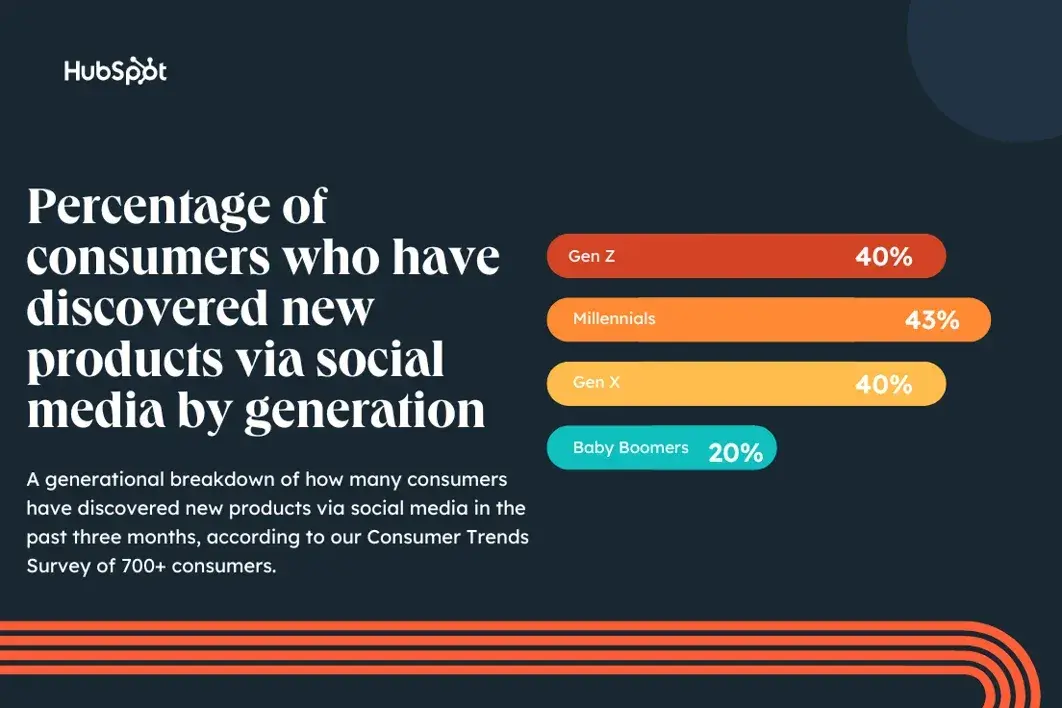
These are the two areas you want to focus on initially. Once you have some content going, you can see how they perform and then fine-tune your strategy.
2. Create your content calendar/backlog.
Once you know your channels, it’s time to start creating content. But you can’t post just anything — it needs to be content your audience actually finds valuable.
If you’re blogging, keyword research and competitor analysis can help you build a list of keywords and topics that you can tackle. These can also be used for YouTube videos and social media content.
It’s also smart to start by answering common questions people have related to your product or industry. Nothing is too basic. In fact, an experiment by Conductor found consumers who read early-stage educational content are 131% more likely to buy from a brand immediately than those who don’t.
Addressing concerns (good or bad) helps your audience feel heard and seen. It helps you stand out as a trustworthy, honest resource and also gives your brand a chance to show your audience you know what you’re talking about.
Few things make someone want to buy from you more.
Get your content ideas into a dated content calendar or even just a list in a spreadsheet or text document (I did this for many year).
Be as scrappy as you want to get started. Just get the ideas out and recorded so you’re not constantly asking yourself “what should I post?”
If you’re an organization nerd like I am, download our free editorial content templates. They can help you plan and optimize your marketing content on Microsoft Excel, Google Sheets, or Google Calendar.
3. Create content.
Now for my favorite part — creating!
Write the blog. Design the graphic. Film the video. Curate the UGC.
Don’t forget there are plenty of AI tools to help you get started here. HubSpot’s Free AI Content Writer, for example, can help you generate blog content, website copy, and social posts among other things.
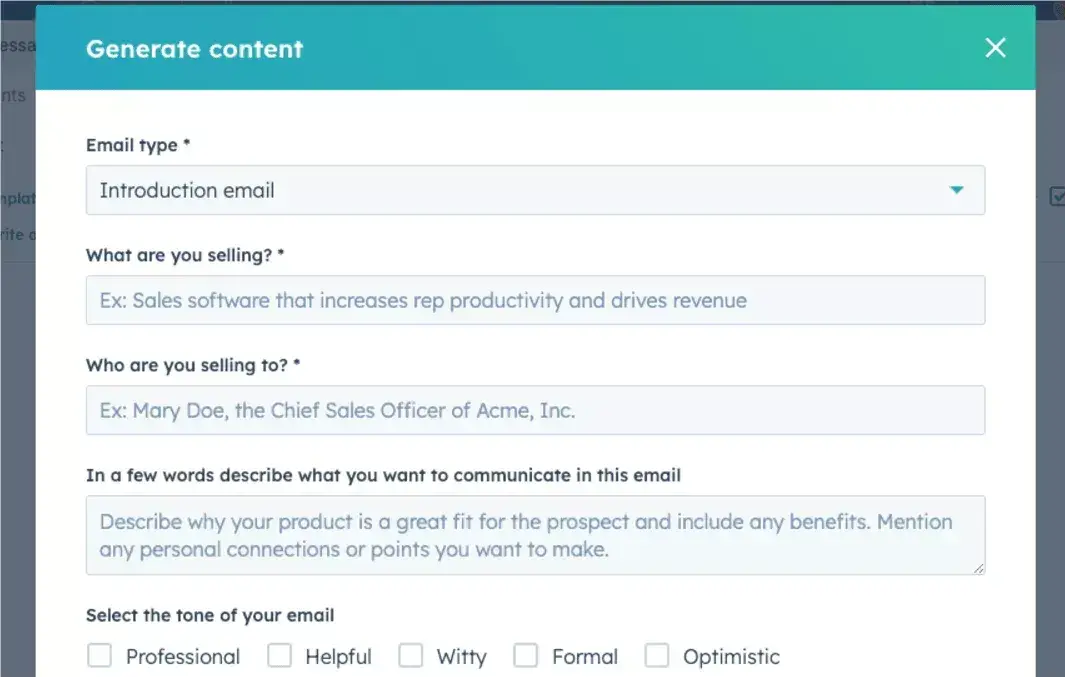
But remember — this content is just a jumping-off point. AI-generated content is unoriginal by nature. Taking the time to edit and humanize it before using is non-negotiable.
Learn “How to Humanize AI Content So It Will Rank, Engage, and Get Shared in 2025.”
4. Optimize your content.
You’ve got your organic marketing content, now it’s time to make it shine. Optimize your work so it will show up on search engines and appear its best on social media.
When it comes to SEO, this usually means using your target keywords in any writing (blog articles, video descriptions, social media posts). But it also means making sure your social media videos and graphic meet the technical specs of their platforms.
Like if you’re designing a frame or filming a video for an Instagram Story, it should be framed vertically. Going against the dimensions of your designed medium or platform creates a poor user experience.
5. Post.
Hit that post or publish button!
Note: If you’re a HubSpot user, you can draft and publish blogs, schedule social media posts, and send emails right inside your portal. With our Ads software, you can also run and manage ads on Google, LinkedIn, Facebook, and Instagram.
6. Evaluate and improve.
No matter how much data you base them on, treat every piece of organic marketing as an experiment. You can never really know how something will perform until it’s out in the world. So once your work is live, monitor and track its performance.
HubSpot Reporting can be a single source of truth for all your organic marketing data. You can use to view your website traffic sources, analyze social media post engagement, and track email opens and clicks among other things.
It was my personal favorite even before joining the team, but whatever platform you choose should offer similar analytics.
This data will help you see what‘s actually working and what isn’t for your organic marketing and help you pivot, evolve, and improve your strategy as needed.
Don’t Sleep on Organic Growth in 2025
While paid marketing has its undeniable advantages — speed, precision, and visibility — organic marketing brings long-term benefits that no amount of money can replicate: trust, authority, and a community of loyal customers.
The secret lies in striking the right balance.
Use organic marketing to create a strong foundation of quality content, meaningful interactions, and a recognizable brand presence. Then, enhance your efforts strategically with paid campaigns to amplify your reach or target specific audiences.
In a landscape where the competition for attention grows fiercer by the day, organic marketing is your opportunity to stand out by being genuine, helpful, and consistent. So, why settle for quick wins when you can build a sustainable future for your brand?
With the right mix of creativity, optimization, and patience, organic marketing can be your most powerful ally in 2025 — and beyond.
Editor’s note: This post was originally published in September 2021 and has been updated for comprehensiveness.
![Download Now: Free Marketing Plan Template [Get Your Copy]](/wp-content/uploads/The-9-Best-Marketing-Frameworks-You-Need-to-Know.png)


